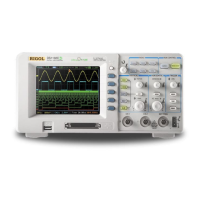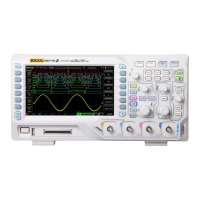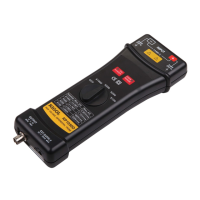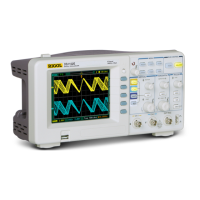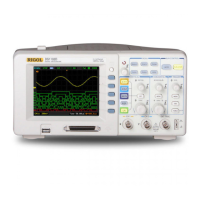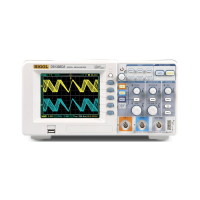
Do you have a question about the Rigol DS1052D and is the answer not in the manual?
| Bandwidth | 50 MHz |
|---|---|
| Channels | 2 |
| Sample Rate | 1 GSa/s |
| Memory Depth | 1 Mpts |
| Vertical Sensitivity | 2 mV/div to 5 V/div |
| Timebase Range | 5 ns/div to 50 s/div |
| Trigger Modes | Edge, Pulse, Video, Slope, Alternate |
| Math Functions | Addition, Subtraction, Multiplication, Division, FFT |
| Max Input Voltage | 400 V (DC + AC Peak) |
| Power Supply | 100-240 VAC, 45-440 Hz, 50 VA Max |
| Display | 7 inch TFT LCD |
| Interface | USB Host, USB Device, RS232 (Optional) |
| Display Resolution | 320 x 234 |
| Input Impedance | 1 MΩ ± 2% |
Steps to check the oscilloscope upon receipt and inspect for damage.
Overview of the oscilloscope's front and rear panels and user interface elements.
Guide to verify the instrument's basic operation and functionality.
Explanation of vertical controls, settings, and their impact on the waveform display.
Explanation of horizontal controls, time base, and scan modes.
Explanation of trigger controls, modes, and their setup for stable waveforms.
Detailed setup of vertical controls, including coupling, bandwidth, and probe attenuation.
Detailed setup of horizontal controls, including time base, scan modes, and display formats.
Comprehensive guide to trigger modes, sources, slopes, and sweep settings.
How to use automatic measurement functions for voltage and time parameters.
Using manual, track, and auto modes for cursor measurements of voltage and time.





